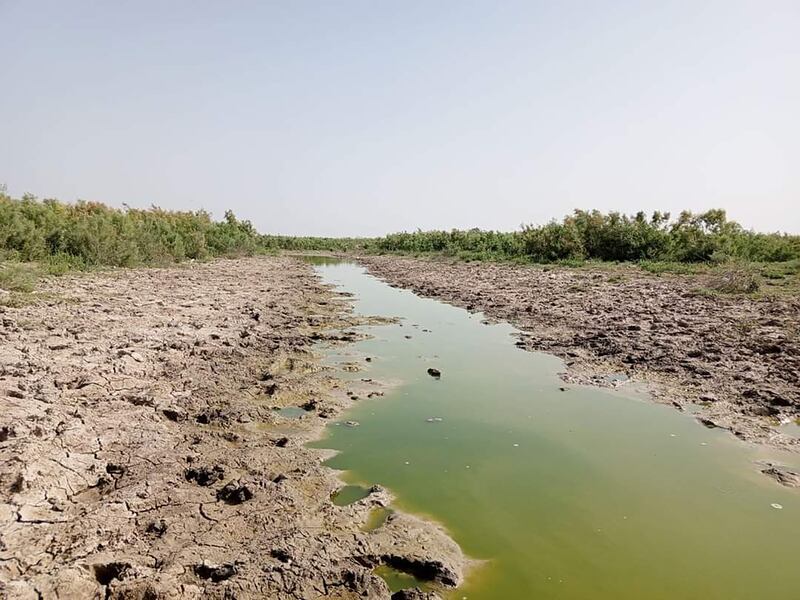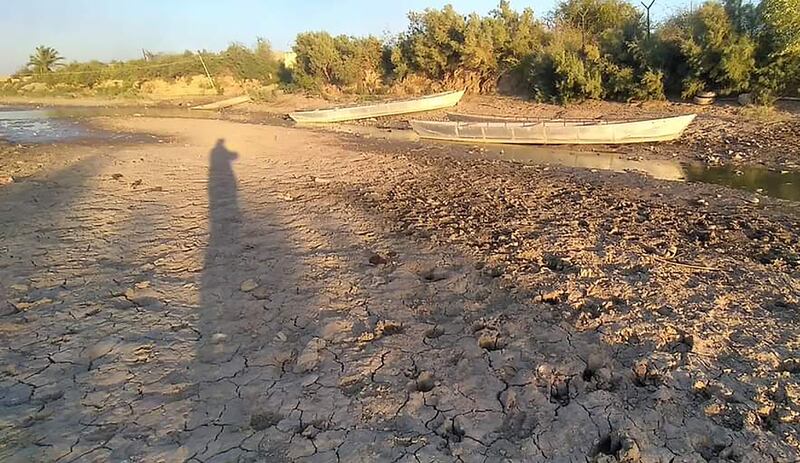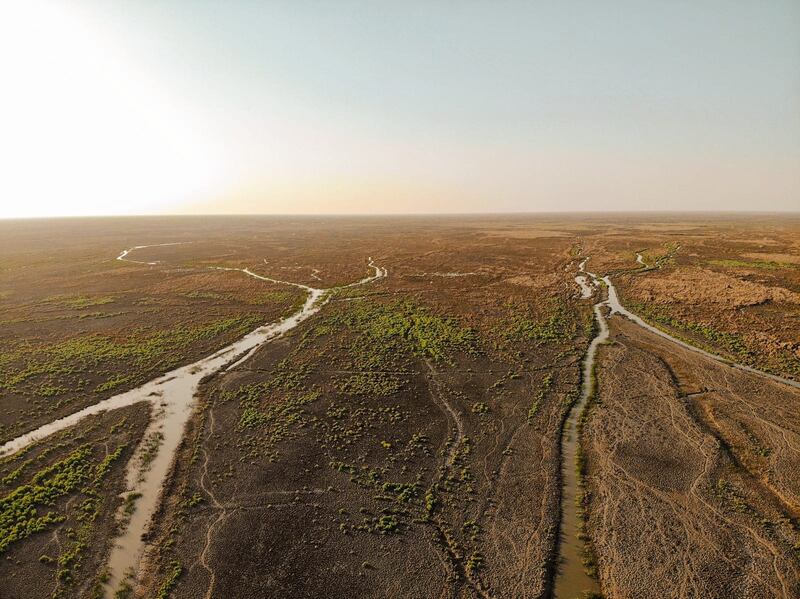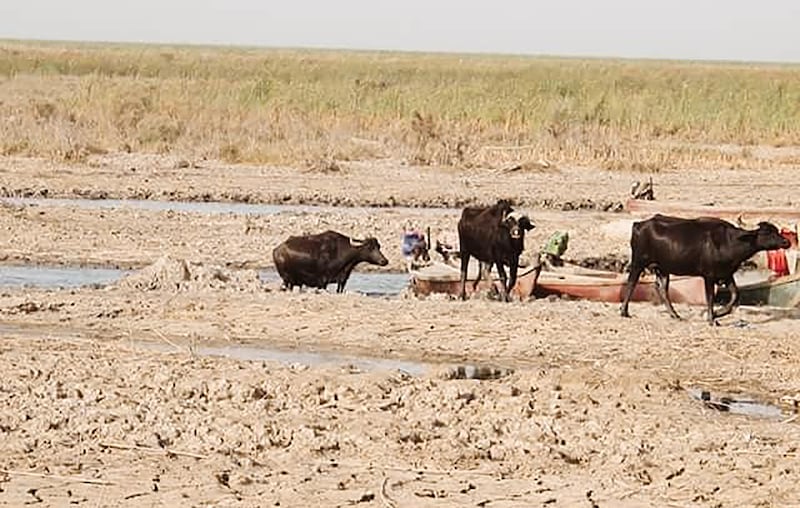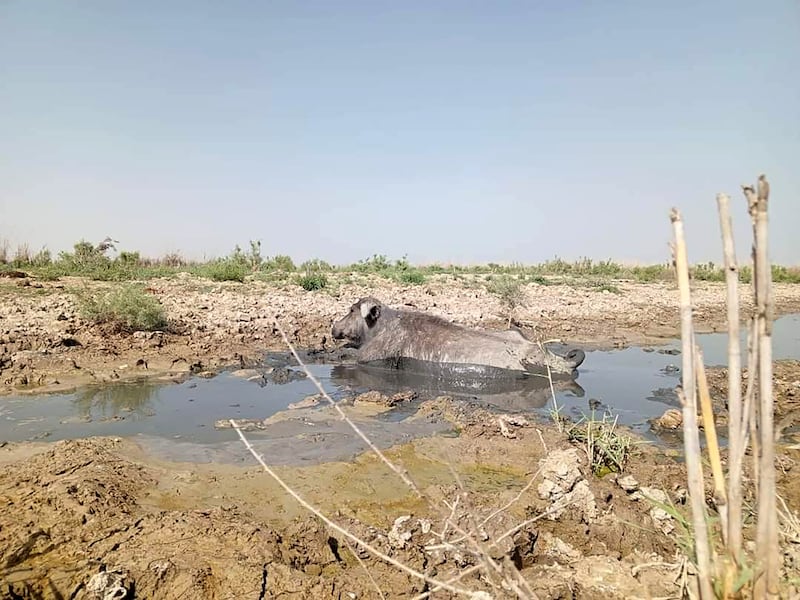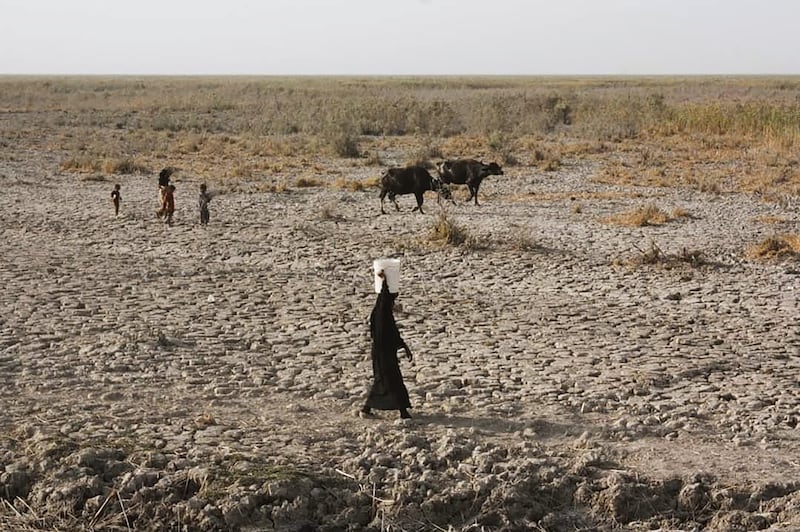Gone may be the days of raising livestock and traversing narrow waterways lined with dense reed beds in southern Iraq's once-lavish marshlands.
Hashim Mahdi Lazim is one of those uprooted from an agrarian heaven because of the relentless grip of drought.
Instead, he now navigates the maze of the city’s concrete streets and crowded pavements surrounded by the relentless pace of urban life.
“Our life has been turned upside down,” Mr Lazim, 34, whose roots run deep in the marshes, told The National.
“The whole family have been devastated, but what can we do? We have been forced to leave due to acute drought that made our areas unliveable.”
The UN Environment Programme ranks Iraq – known in ancient times as Mesopotamia or the Land Between the Two Rivers – as the fifth most-vulnerable country in the world to the effects of climate change.
Over the past three years, the country has experienced record temperatures that exceeded 50°C in many places during the summer, insufficient and diminishing rainfall and frequent sand and dust storms.
Coupled with the reduced water flow of its two main rivers after passing through Turkey and Iran, the extreme weather has intensified drought and water scarcity in Iraq.
Desertification affects at least 39 per cent of the country and 54 per cent of its agricultural land has been degraded, mainly due to soil salinity caused by historically low river levels, less rain and rising sea levels.
In recent years, the once-vibrant and thriving Iraqi marshes, a Unesco World Heritage Site thought to be the biblical Garden of Eden, have shrunk from nearly 4,000 square kilometres in 2005 to less 500 square kilometres.
That has forced thousands of families to leave the marshes to live in the cities. This year alone, about 68,000 people have migrated from the wetlands, according to the Environment Ministry.
Among those left is Mr Lazim’s nine-member family.
For years, the family lived in a picturesque oasis of green in the vast Abu Khasaf area in Al Hawizeh marshland in the southern province of Mayssan. Here Mr Lazim cared for his water buffaloes in the lush reeds that swayed in the breeze, a sight that had been a constant for generations.

“I used to rise with the sun and spend hours nurturing the crops and tending to my buffaloes in the water,” he said.
“Life was perfect. I had my beautiful reed house, mashhouf [wooden boat], cattle, crops and I used to go fishing and hunting,” the father of seven said.
However, relentless drought left his once-thriving area barren. Water became scarce, his once-green homeland transformed into arid land and all his cattle died.
In late 2019, he made the heart-wrenching decision to leave.
“Since then, my life has transitioned from one surrounded by lush greenery, fresh air, and the hum of cattle to an existence dominated by concrete jungles,” he said.
“Now, we are surrounded by a concrete wilderness, the air is tainted with pollution. The sights and sounds of this new environment area a stark contrast to the peaceful rural life we cherished.”
He has settled in a small rented house in the town of Kahlaa in Mayssan province, working as a construction worker, making at most 25,000 Iraqi dinar (about $15) a day.
The loss of his tight-knit farming community has left a void in his life in a city where interactions with neighbours are often limited to a brief nod.
His food comes from the supermarket and lacks freshness and flavour, he said. He yearns for the taste of home-cooked meals with ingredients sourced from his land.
His only opportunity to return to his homeland is when water covers parts of it, giving him a chance to take tourists on trips in his wooden boat.
This is not the first time the marshes have dried up.
During the 1980-1988 war with Iran, Saddam Hussein drained the marshes to facilitate the movement of the military. In the 1990s, he initiated another campaign after accusing marsh Arabs of supporting a 1991 Shiite uprising. After the 2003 US-led invasion that toppled Saddam's regime, huge parts were reflooded.
Those who remained in the Abu Khasaf area are counting their losses.
Rasool Nouri lost one of his remaining six buffaloes on Thursday as a result of the arid conditions. Three months ago, he made a small lake for his buffaloes, but most of its water has now evaporated.
“The situation is getting worse day after day,” Mr Nouri, 27, told The National. “If we see no rains this month and the next one, then we have to leave to the city.”



